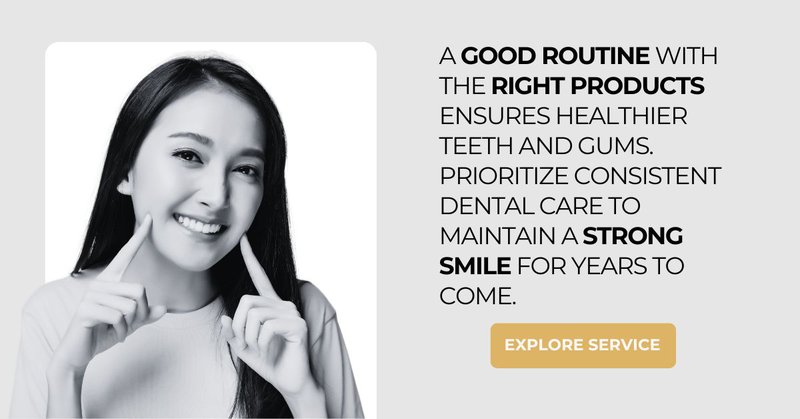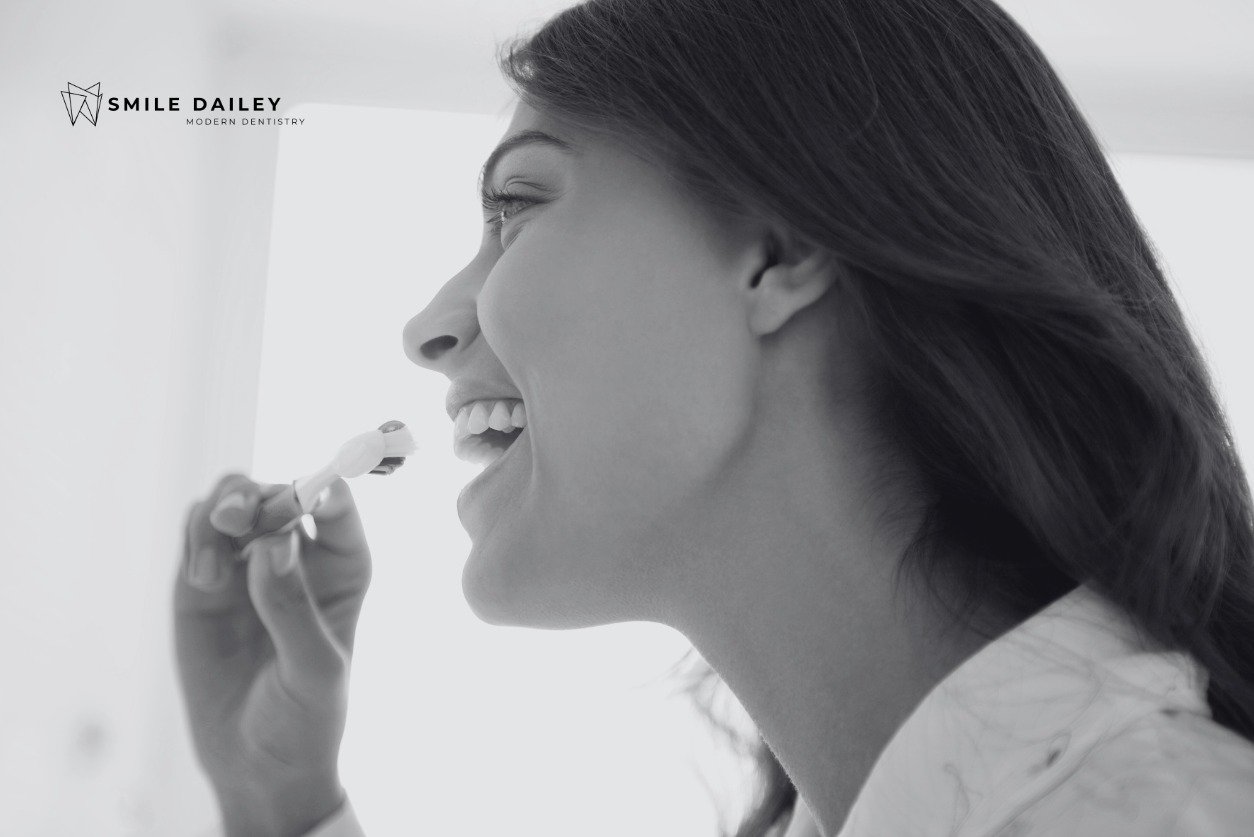Think brushing your teeth is simple? Not if you care about healthy gums and fewer cavities. The way you brush matters—and using the wrong method can do more harm than good. So which of the tooth brushing techniques should you use? We’ll walk you through the main styles, show how they differ, and help you pick one that fits your needs. Ready to brush smarter, not harder?
Key Takeaways:
- Modified Bass technique is best for plaque removal and gum health. It uses a 45° angle, small strokes, and a sweep.
- Bass, Stillman, and Charters methods differ by brush angle, stroke style, and gums focus. Charters works well for braces.
- Electric brushes (especially oscillating-rotating) clean deeper. Move slowly tooth to tooth—don’t scrub.
- Use light pressure—just enough to slightly bend bristles—to avoid damage.
- Fones method is great for kids. Teach large circles and a flat brush hold.
- Top mistakes: pressing too hard, brushing too fast or flat, skipping spots like back molars.
- Brush twice daily for 2 minutes using a soft brush, fluoride toothpaste, and short gentle strokes.
- ADA provides trusted step-by-step brushing guides and helpful videos.

Tooth Brushing Techniques: A Simple Guide to Healthier Smiles
At Smile Dailey Dental, we believe a great smile starts with solid brushing habits. But brushing isn’t just about frequency—it’s about how you brush. There’s more than one way to do it right, and the best method depends on your age, dental health, and personal needs. We’ll expand on the most effective tooth brushing techniques, breaking them down so you can choose what works best for your smile.
Why Tooth Brushing Techniques Matter More Than You Think
Many people brush every day but still struggle with plaque, gum issues, or cavities. Often, it’s not poor effort—it’s poor technique. Brushing the wrong way can lead to enamel wear, gum recession, and missed plaque.
The right technique helps:
- Prevent tooth decay and gum disease
- Remove plaque from under the gum line
- Keep enamel and gums healthy
- Improve breath and reduce tartar buildup
Understanding the Key Tooth Brushing Techniques
Not all brushing methods are created equal. Each has a specific focus—some target plaque at the gum line, while others are easier for kids or those with limited dexterity.
Bass Technique
- Angle: 45° toward the gumline
- Motion: Small back-and-forth vibrations
- Best for: Gently cleaning under the gum line
- Why use it: It effectively reduces gum inflammation and plaque buildup.
Modified Bass Technique
- Angle: Same 45°
- Motion: Wiggle + sweep
- Best for: Thorough cleaning of gums and teeth
- Why use it: Therefore, it is most recommended by dentists for long-term gum health.
Stillman Technique
- Angle: 45°, more on the gums
- Motion: Gentle shaking, then roll down
- Best for: Receding gums or sensitive areas
- Why use it: Consequently, it stimulates gums while cleaning.
Charters Technique
- Angle: Toward the tooth, not the gum
- Motion: Short circular wiggles
- Best for: Braces, bridges, or crowns
- Why use it: As a result, it effectively cleans around dental appliances.
Learn more about tooth brushing techniques with the American Dental Association's brushing advice.
Simpler Brushing Techniques for Beginners and Kids
If the Bass method feels too complex or slow, fortunately, other options make brushing easier.
Fones Technique
- Motion: Large circular movements
- Best for: Young children
- Why use it: It's easy to learn and fun, making it a great starting point for kids.
Rolling Stroke Method
- Motion: Start at the gumline, then roll the brush away
- Best for: Adults with sensitive gums
- Why use it: It is gentle and safe, thus providing comfort for those with sensitivity.
Leonard (Vertical) Method
- Motion: Up-and-down strokes
- Best for: Baby teeth or limited control
- Why use it: This method is simple for early learners and, therefore, an ideal choice for beginners.
Perfecting Your Toothbrush Angle and Position
Most decay and gum disease start where teeth meet the gums. Therefore, the 45° angle is crucial. It allows the bristles to reach slightly under the gumline without causing damage.
Tips for proper angle and position:
- For upper teeth: bristles angled upward
- For lower teeth: bristles angled downward
- Additionally, use short strokes, one tooth at a time
- Moreover, keep your mouth partially open for better access to molars
Applying the Right Brushing Pressure
Gentle is best. In fact, too much pressure can wear down enamel and push gums back. The correct amount of force should, consequently, slightly flex the bristles—but not flatten them.
Try this trick: Press your brush against a kitchen scale. Aim for about 150–200 grams of pressure.
Signs you’re brushing too hard include:
- Frayed bristles after a few weeks
- Additionally, gum soreness or bleeding
- Finally, tooth sensitivity
Soft brushes and light strokes protect your mouth while still removing plaque.
Step-By-Step Guide to the Modified Bass Method
This dentist-recommended technique takes a little practice but gives excellent results.
- Angle the brush at 45° toward the gumline
- Wiggle the brush in tiny motions over one tooth
- Sweep away from the gum to clear debris
- Repeat on each outer, inner, and chewing surface
- For front teeth, hold the brush vertically and use up-and-down strokes
This method is slow—but effective.
Matching Tooth Brushing Techniques to Age and Needs
Different mouths need different methods. Here’s how to pick the right one for you or your family.
For Kids (Ages 2–6):
- To begin with, use the Fones method.
- Additionally, parents should guide hand-over-hand.
- Furthermore, choose small brushes with soft bristles.
For Teens:
- Primarily, use the Modified Bass technique.
- Moreover, add the Charters method if braces are involved.
- In addition, remind them not to rush.
For Adults:
- Generally, the Modified Bass works best.
- For those with sensitive gums, try the Stillman or Rolling Stroke.
- Also, use a small-headed brush for back teeth.
For Seniors:
- Firstly, use soft brushes with larger handles.
- Secondly, electric brushes may help with grip and motion.
- Finally, focus on comfort and gum safety.
Comparing Electric and Manual Tooth Brushing Techniques
Electric brushes do the work for you, but technique still matters. Don’t scrub. Instead, guide the head slowly across each tooth and let the motor clean.
Electric brushing tips:
- First, maintain a 45° angle.
- Next, hold the brush in place for a few seconds per tooth.
- Additionally, use built-in timers to ensure full coverage.
- Finally, choose a soft-bristle head and replace it every 3 months.
Sonic vs. Oscillating Heads:
- Oscillating: generally better for deep plaque.
- Sonic: on the other hand, is gentler for sensitive gums.
Manual brushes can work well too, provided you follow proper technique. They’re more affordable and give you better control, but require more effort and awareness.
Preventing Gum Disease and Decay with Better Brushing
Plaque is full of bacteria that cause gum disease and cavities. Therefore, brushing clears it before it hardens into tartar.
Best practices for prevention:
- First, brush twice daily for two full minutes.
- Next, use a soft-bristled brush and fluoride toothpaste.
- Additionally, focus on the gum line using small strokes.
- Furthermore, brush your tongue to fight bad breath.
- Finally, floss once a day to clean areas your brush can’t reach.
If you notice bleeding gums, don’t stop brushing—just be gentle. Often, bleeding means plaque is already there.
Common tooth brushing mistakes to avoid
Even daily brushers can make mistakes. However, here are the habits to watch out for:
- Brushing too hard
- Using a worn-out brush
- Brushing flat against teeth (missing the gum line)
- Rushing or skipping areas
- Not brushing inside or back teeth thoroughly
Fix these with SQuAD:
- First, choose a Soft brush.
- Then, be Quick but careful.
- Additionally, ensure you Angle correctly.
- Finally, Don’t press too hard.
To ensure thorough cleaning, use a mirror or disclosing tablets to check missed spots. Then adjust your method.
Where to Learn More About Tooth Brushing Techniques
Not sure if you're brushing the right way? Fortunately, there are plenty of resources that offer guidance.
Professional Tools and Tips:
- To begin with, visit the ADA’s brushing guide.
- Additionally, ask your dentist for an in-office demonstration.
- Moreover, try disclosing tablets to see where plaque remains.
- Furthermore, choose products with the ADA Seal of Acceptance.
- Finally, watch brushing videos from trusted dental clinics.
Toothbrushes That Help:
- Start with soft bristles only.
- Also, select small heads for better access.
- In addition, consider electric models with pressure sensors and timers.
- Lastly, opt for wide handles for better grip.
Overall, the right tool makes good technique easier. But it’s still your hand that makes the difference.
Ready to Improve Your Brushing Routine?
Let’s Help You Brush Better, Not Just More
At Smile Dailey Dental, we believe small changes in your brushing habits can lead to big results. Whether you're struggling with sensitive gums, wearing braces, or just want to boost your oral routine, our team is here to guide you. We’ll help you choose the best tooth brushing techniques for your needs and lifestyle.
Contact us today to schedule a dental visit.
A few minutes a day, done right, can keep your smile healthy for life.

